TA author insights
We talked to some authors who have published influential research under one of our transformative agreements to find out what the experience was like and what it means to be able to publish openly.
Find out if your institution is participating in a transformative agreement here.
Mauro Paternostro, Queen’s University Belfast, Northern Ireland, United Kingdom
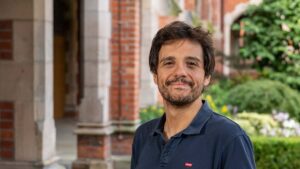 Mauro Paternostro, is a quantum physicist at the University of Palermo and Queen’s University Belfast, and an expert in quantum information processing and quantum technology. Working on the foundations of the subject, his team is doing pioneering research in cavity optomechanics, quantum communication and beyond. He is also editor in chief of the IOP Publishing journal Quantum Science and Technology.
Mauro Paternostro, is a quantum physicist at the University of Palermo and Queen’s University Belfast, and an expert in quantum information processing and quantum technology. Working on the foundations of the subject, his team is doing pioneering research in cavity optomechanics, quantum communication and beyond. He is also editor in chief of the IOP Publishing journal Quantum Science and Technology.
IOP Publishing has a transformative agreement with your institution for funded open access publishing, how has that helped you?
I think it has been a game-changing agreement as far as the publication of our output is concerned. With the stringent criteria that the research councils have put on outputs supported by grants – from the Engineering and Physical Sciences Research Council (EPSRC) for instance – and the need for them to be fully accessible, and data to be fully available to the community, having a TA that guarantees open access is what we need. It’s great to have the peace of mind that IOP Publishing is a viable avenue for where my EPSRC-compliant outputs can be published. Apart from funding compliance, the IOP Publishing agreement removes the administrative burden of dealing with invoices for the article publication charges (APCs) which is a big relief for the scientists.
Dr Darren Tianye Zheng, The Hong Kong Polytechnic University, Hong Kong, SAR
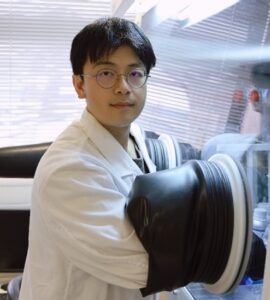 Dr Darren Tianye Zheng is a postdoctoral researcher at the Hong Kong Polytechnic University, focusing on electrode materials of rechargeable batteries, battery health
Dr Darren Tianye Zheng is a postdoctoral researcher at the Hong Kong Polytechnic University, focusing on electrode materials of rechargeable batteries, battery health
monitoring, and real-time battery sensing. His articles Lithium aluminum alloy anodes in Li-ion rechargeable batteries: past developments, recent progress, and future prospects in Progress in Energy, and Insights into the Sodiation Kinetics of Si and Ge Anodes for Sodium-Ion Batteries in Journal of the Electrochemical Society, were published under the transformative agreement between IOP Publishing and the Hong Kong Polytechnic University.
How would you describe the process of publishing through a transformative agreement with IOP Publishing?
“Smooth” would be the first word that popped up in my head after reading this question. It makes no difference from a regular submission.
What do you think are the advantages of publishing through a transformative agreement?
There are many! The OA publishing has made the works highly visible. My review paper has been downloaded more than 2400 times after nine months, which is surprising. We also received several e-mails from experts working in the same field. From a societal perspective, as a scientist working in a public university, it is my obligation to ensure that all taxpayers in Hong Kong have the opportunity to access and benefit from my research.
Did the transformative agreement make it easier to publish open access?
Certainly! The APC is often quite expensive in my opinion as an early career researcher. I often need to seek approval from my advisor or department office to cover the OA cost prior to submission, which is often a painful process. With the TA, it is no longer a problem.
Do you have any words of advice for other authors interested in publishing open access through a transformative agreement?
I’d say go for it and be strategic in publishing your works. Maximizing the exposure of your work could be a wise step if you are at the early stage of your scientific career. In general, OA papers attract more reads, downloads, and citations.
Dr Chris Marsh, University of Saskatchewan, Canada
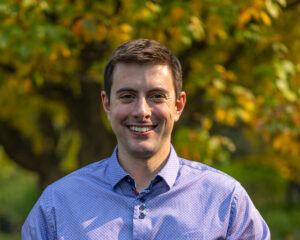
Along with two other researchers, Christopher Marsh validated the cutting-edge global-extent “forest and buildings removed Copernicus digital elevation model” (FABDEM) for accuracy. Their research provides confidence in space-based topography mapping, especially in canopy filled mountain terrain. Read Christopher Marsh’s article in Environmental Research Communications: Validation of FABDEM, a global bare-earth elevation model, against UAV-lidar derived elevation in a complex forested mountain catchment
Congratulations on your latest paper. Can you please briefly explain the research that was published?
In the Earth Sciences, satellite imagery is used extensively to map and study terrain. A persistent problem in space-based observation and topography models is that tree canopies and urban canopies lead to overestimation of elevation. Last year, researchers released a global-coverage digital elevation dataset called FABDEM that uses machine learning to remove the artifacts of vegetation and buildings from mapped terrain. This dataset thus offers maps of the bare earth, denuded of canopies and with improved precision.
Our work is an independent evaluation of the accuracy of the FABDEM dataset. We compared the global FABDEM dataset to elevation measured using a LIDAR sensor mounted on an unmanned aerial vehicle (UAV). LIDAR is short for Light Detection and Ranging. It is a method used to image the surface of the earth remotely. UAV-LIDAR provides the highest resolution and accuracy possible for elevation mapping beneath forest canopies and represents the best estimate of the “true” elevation. We evaluated the dataset in one of the trickiest locations—steep, forested mountain terrain. We found that the FABDEM global-coverage dataset was comparable to the UAV-LIDAR dataset and was best-in-class when compared to other existing and commonly used vegetation-removed datasets.
Do you have any personal motivation for studying this topic?
As hydrological modelers and field researchers, we depend heavily on good digital representations of the topography across basins and regions. As mentioned previously, removing vegetation and urban canopies is crucial to improving the accuracy of space-based elevation measurements. FABDEM is the latest database of elevation data. But it needs to be tested and validated. Being able to validate next-generation datasets with our own highly detailed LIDAR observations gives us confidence in these datasets. This is what motivated this study.
What do you imagine are the potential real-life applications of your research, or how will it affect people’s lives in the long term?
The FABDEM dataset is considered one of the best global-coverage datasets. However, because it includes the biases of forest canopies, it is considered less useful for certain types of hydrological modeling and ecological studies, especially in rugged mountain topography. Thus, the machine-learning dataset can potentially be used if it is proven to be accurate in such locations. Also, the steep, forested mountain areas are typically poorly represented in many datasets. So, having an independent evaluation in this location can give other researchers further confidence in using the FABDEM dataset.
Can you describe the process of publishing through a transformative agreement with IOPP?
It was very effortless and automatic. Our institution was clearly listed as having signed the transformative agreement with IOPP. Therefore, it all worked out seamlessly throughout the submission, review, and publication process.
What do you think are the advantages of publishing through a transformative agreement?
Publishing open access is critical for maximizing research impact and ensuring widespread dissemination of research findings. Being able to do so at no cost is important for us researchers, and it removes any hesitation to publish open access. Normally, publishing open access incurs a significant cost—so consideration is limited to if/when funds are available and specific papers. The transformative agreement gives researchers the financial freedom to share more of their valuable work with the world.
What is your advice for other authors looking to publish open access through transformative agreements?
It was not an agreement we were previously aware of; therefore, I would encourage other authors to check if their institution is a partner proactively!
Professor Lipton-Duffin and Professor MacLeod, Queensland University of Technology, Australia
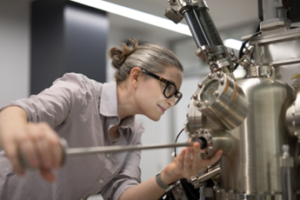
Professor Josh Lipton-Duffin and Professor Jennifer MacLeod (pictured) from Queensland University of Technology are studying molecular reactions on solid surfaces in an effort to synthesize new and useful materials. Read their article: Innovations in nanosynthesis: emerging techniques for precision, scalability, and spatial control in reactions of organic molecules on solid surfaces
This was published open access in Journal of Physics: Condensed Matter, under the transformative agreement with the Council of Australian University Libraries.
Congratulations on your latest paper! Could you tell us about your surface science-based approach to synthesizing new organic materials and why it is so different?
Jennifer: Our approach focuses on understanding how molecules and atoms behave on surfaces and whether we can control this behavior to produce useful new materials. We treat molecules like building blocks that can be used to create one- and two-dimensional structures with interesting chemical, electronic or structural properties.
Josh: A lot of industrial-scale processes, say, for example, the fabrication of various materials, are arrived at through exhaustive trial and error, but the fundamental process (or what happens at the atomic scale) remains a bit of a mystery. This is because studying real-world processes is quite complicated; physicists must deal with multiple atoms and molecules in multiple configurations to do so, and that’s very challenging. But that’s what we’re doing. We study these processes atom by atom and molecule by molecule.
What motivated you to look at molecular reactions on solid surfaces, and materials synthesis in particular?
Josh: I am a bit of a gearhead, and I love taking things apart and putting them back together. So, my motivation was both bottom-up and top-down. On the one hand, putting together new materials from molecular building blocks is a very small version of my childhood obsession with Lego blocks. On the other hand, we get to use, tinker with, and build some pretty awesome instrumentation, which not only looks impressive but also keeps us on the cutting edge of a lot of technologies.
Jennifer: I’ve got quite a few reasons. The first is that I’ve always found images of atoms to be amazing and beautiful, and getting to “see” atoms on a daily basis never fails to be a thrill. The second is that we get to create and understand tiny little things that have never existed before, which is also awesome. The third is that the work is so varied and continually challenging, it never gets boring! One day can be spent with a wrench in hand, taking apart a vacuum chamber or building instruments, and the next can be spent doing calculations to understand the thermodynamic properties of candidate structures.
How do you suppose your research will improve people’s lives in the long run?
Josh: In terms of ‘practical’ things, we are low on the technology readiness scale. But I very much hope that our work can support future development of technologies by bright minds who are good at that sort of thing.
Jennifer: Yes. Right now, this work is fundamental. But in the larger picture, the materials we synthesize might have certain properties required for their use in next-generation technologies and might make a difference to future-focused challenges around energy, information, and sustainability. These materials can exhibit exciting quantum properties that unlock a whole lot of interesting applications. And that holds immense potential.
Your paper, which is open access, was published through a transformative agreement that the Council of Australian University Librarians (CAUL) has with IOP Publishing. How would you describe the publication process?
Josh: Pretty seamless! I think it should be the norm across the industry. Honestly, it is far simpler than processes from other publishing houses.
Jennifer: I would use the word “painless”. It was quick and easy.
Do you believe there are advantages to publishing open access, or through a transformative agreement, like this one?
Jennifer: Yes! The biggest one being that it makes our work accessible to everyone interested in reading it, with almost no effort from our side. It also makes meeting the obligations of our funding agreements and institutional policies around open access easy.
Josh: I strongly believe in accessibility—removing barriers for potential readers of science. We get better outcomes when more people can access what we do. Open access should be the default for publicly funded work.
Do you have any words of advice for other authors interested in publishing open access?
Jennifer: They should definitely look into it. It’s been great from my perspective and could be the right fit for others as well.
Josh: I’d agree. Go for it! This is a great way to have individual authors’ work reach more eyes without having to worry about post-hoc costs after all of the research and writing have finished.
Dr Ozbolat, Penn State University, The United States
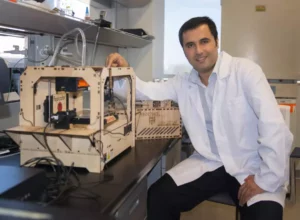 Dr Ibrahim Tarik Ozbolat is professor in the Engineering Science and Mechanics Department of Penn State. He is a specialist in 3D bioprinting, artificial organs, and regenerative medicine and has recently published research in Biofabrication which looks at a new way to generate microgels; High-throughput microgel biofabrication via air-assisted co-axial jetting for cell encapsulation, 3D bioprinting, and scaffolding applications. This was published open access under the transformative agreement with Big Ten Academic Alliance.
Dr Ibrahim Tarik Ozbolat is professor in the Engineering Science and Mechanics Department of Penn State. He is a specialist in 3D bioprinting, artificial organs, and regenerative medicine and has recently published research in Biofabrication which looks at a new way to generate microgels; High-throughput microgel biofabrication via air-assisted co-axial jetting for cell encapsulation, 3D bioprinting, and scaffolding applications. This was published open access under the transformative agreement with Big Ten Academic Alliance.
Can you tell us about your latest findings?
Our latest study shows a new technique to make larger quantities of microgels in a much easier way. Due to their properties, microgels are gaining immense attention for use in tissue repair and regeneration. Currently, there are several microgel fabrication techniques, but their wide usage is challenged as they are expensive and time consuming.
With our new technique we can produce more microgels which can be used to create self-healing materials, drug-delivery systems and bioinks to assist 3D imaging of human tissues and organs. Our study has the potential to accelerate tissue engineering technologies and improve the quality of life for many people.
Why did you decide to publish the research open access?
I believe that the democratization of scientific knowledge is essential, and one way to accomplish this goal is by making research open to access. By removing barriers to accessing scientific information, we can ensure that everyone, regardless of their background or financial resources, has the opportunity to engage with and benefit from scientific research. Open access publishing is also an excellent way to make scientific information available to a broader audience, including researchers, policymakers, healthcare professionals, and the general public.
What benefits did you see from publishing your work open access?
Publishing our research open access did lead to some surprising outcomes. One of the most notable things that happened was the increased visibility of our work. By making our article freely available, we were able to reach a much wider audience. As a result, we received more downloads and views of our article than we had anticipated. Additionally, some researchers working in the same field reached out with queries or for possible collaborations.
Did the transformative agreement make it easier to publish open access?
Typically, when publishing research is supported by the National Institutes of Health (NIH) funding agency, it is published on platforms like PubMed. However, the publication process can sometimes be time-consuming, with a delay in online availability. The transformative agreement streamlined the publication process, ensuring that our research was made available online as soon as it was accepted.
You can read the full interview with Dr Ozbolat here.
Magnus Jonsson, Linköping University, Sweden
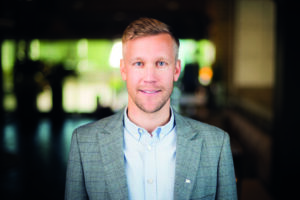 Magnus Jonsson received the Journal of Optics Emerging Leaders Award for his outstanding research, Highly reflective optical nanocavities for structural coloration by combining broadband absorber and Fabry–Pérot effects. It was published open access in Journal of Optics, under the transformative agreement with the Swedish BIBSAM consortium.
Magnus Jonsson received the Journal of Optics Emerging Leaders Award for his outstanding research, Highly reflective optical nanocavities for structural coloration by combining broadband absorber and Fabry–Pérot effects. It was published open access in Journal of Optics, under the transformative agreement with the Swedish BIBSAM consortium.
How easy was it to publish open access under the transformative agreement?
It was easy and quick, which is important for us so that we use our time for the research and article writing. We have grants that instruct us to share our research findings open access. Publishing open access is rather standard for us, via open access in scientific journals and also by posting preprints.
Did it lead to anyone surprising seeing your work?
Our paper has received significant attention, which is great. Besides researchers, we are sometimes approached by companies that have read about our research and some of them may not have had access to the articles unless they were published open access.
What are the next steps for your research?
We are excited about several directions right now. As direct follow-up on the research on structural colors published in Journal of Optics, we have now managed to make the colors dynamically tuneable, by implementing an electroactive conducting polymer as the spacer layer of the optical cavities.
Why do you think it’s important to be able to publish open access?
Sharing the research results with the community is one of the most important aspects of the whole research process. It is important that other researchers, as well as industry and society, have access to read about the latest findings. Likewise, access to others’ research findings is essential for our own research.
Dr. Jane Emily Hill, University of British Columbia, Canada
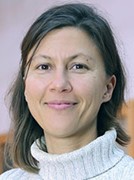
Dr. Jane Emily Hill and her team of researchers from the University of British Columbia and in collaboration with National Jewish Health, is leading the development of a novel approach to diagnose nontuberculous mycobacterial pulmonary infections based on molecules found in breath.
Read Dr. Hill’s article: Breath biomarkers associated with nontuberculosis mycobacteria disease status in persons with cystic fibrosis: a pilot study in Journal of Breath Research.
This article is free to read as it was published open access through a transformative agreement between IOP Publishing and Canadian Research Knowledge Network.
Congratulations on your paper getting published. Could you explain what nontuberculosis mycobacteria are and why it’s hard to diagnose a pulmonary disease caused by them?
Nontuberculosis mycobacteria (NTM) are ubiquitous environmental bacteria commonly found in water and soil. These pathogens are increasingly recognized as serious causes of human morbidity and mortality and pose a significant threat to individuals with an underlying lung disease, such as people with cystic fibrosis (CF).
Reaching a diagnosis of pulmonary NTM disease in patients with CF is very complex. In addition to monitoring clinical symptoms, NTM screening, diagnosis, and treatment relies on traditional culture techniques. However, NTM cultures grow slowly, taking up to 8 weeks, and the majority of patients have only transient positive cultures or indolent infections. In simple terms, the isolation of NTM from a respiratory sample is not enough to confirm a pulmonary NTM disease diagnosis and initiate antibiotic treatment. The decision to treat is consequential, requiring daily antibiotics for several months.
It sounds like culture-based methods might be too slow and inconclusive on their own to diagnose pulmonary NTM disease. Did you and your team come up with a solution to this?
In our pilot study, we investigated whether biomarkers found in exhaled breath can be leveraged to differentiate between people with CF with active-NTM lung disease, those with an indolent NTM infection, and those without any history of a positive NTM culture.
After collecting and analyzing breath samples from 11 patients with CF, we putatively identified 17 breath molecules that could be used for the diagnosis of pulmonary NTM disease. We are following this work up in a much larger clinical study, screening a few hundred patients throughout North America.
What motivated you to delve into this alternative diagnostic approach based on breath samples?
Breath holds great potential as a source of information on an individual’s health status. If we could diagnose a lung infection non-invasively and quickly using exhaled breath, it would improve the quality of lives of many people around the world. Elevating the human condition through the development of next-generation diagnostics was a fundamental motivator of this work.
Your paper was published in the context of a transformative agreement with IOP Publishing. What was this process like?
It was simple and easy, as the process required to utilize the agreement was automated. I actually learned about the transformative agreement by accident; after enquiring about the cost of publishing, I found it was free for me.
What do you think are the advantages of publishing through a transformative agreement?
While I am not sure of the costs to my institution, there are substantial advantages to researchers publishing through this agreement. The cost of publishing, especially that of making a publication open access, can be prohibitive. Yet, for many of us, open access is a key goal so that our findings can be shared as widely as possible. This was easy to do with a transformative agreement, which ensured that this study is published open access.
Do you have any word of advice for other authors interested in publishing open access through a transformative agreement?
It could be worthwhile for authors to learn about these agreements in advance, as this might affect their decision on where to publish. In my case, IOPP’s Journal of Breath Research was my target journal, and I hoped it would accept our article. Finding out that not only could we publish in this journal, but also have our article be open access without incurring any fee, was terrific.
Aline Ramires, Paul Scherrer Institute, Switzerland
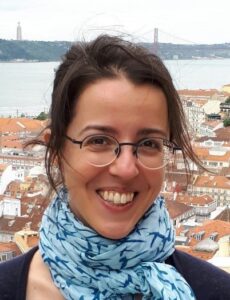 Aline’s research, Nonunitary superconductivity in complex quantum materials was published open access in Journal of Physics: Condensed Matter under the transformative agreement with the Consortium of Swiss Academic Libraries.
Aline’s research, Nonunitary superconductivity in complex quantum materials was published open access in Journal of Physics: Condensed Matter under the transformative agreement with the Consortium of Swiss Academic Libraries.
How easy was it to publish open access under the transformative agreement?
To be honest, I do not remember the details. I think this means that there was no particular difficulty.
Why do you think it’s important to be able to publish open access?
I think open access is fundamental. Coming from a developing country, as a student I faced the pay-barrier multiple times while looking for scientific articles. I remember perceiving it as a strong message: “I am not part of the international scientific community.”
What are the next steps for your research?
My current research focuses on unconventional superconductors. We aim at a better understanding the behaviour of known materials and at the engineering of novel systems with useful properties for technological applications.
Dr. Peter J. Riggs, Australian National University, Australia
Dr. Peter J. Riggs from the Australian National University, a physicist and philosopher of science, is exploring ways to better teach and communicate basic concepts in physics, both to improve our understanding of physics, and to prevent misconceptions from being perpetuated. His article, Energy and Mass Misconceptions was published open access in Physics Education, under the transformative agreement with the Council of Australian University Librarians.
Congratulations on your latest paper. Why is the theme of your article, people’s understanding of energy and mass, important?
Much of my research examines the foundations of physics. The nature of energy and mass are essential concepts in this field of science. Energy, for instance, is fundamental to all physical processes but still needs to be better understood.
Reading your article gives the impression that you are worried about the current state of physics education. Do you have any personal motivation for studying this topic?
In parallel to my research endeavours, I have a strong desire to communicate basic physics concepts clearly and intelligibly. This arises, in part, because as a student, I found that the teaching of such concepts was not always accurately done, and there was insufficient attention to student understanding.
What are some specific real-life applications of your research and how will they affect people’s lives in the long term?
A better understanding of the nature of energy will likely assist in finding new ways to develop and utilise non-polluting / environmentally friendly sources of energy. Such energy sources will be crucial in the fight against global warming.
You published this article through a transformative agreement (TA) with IOP Publishing. How was the experience?
IOP Publishing has made publishing through the TA with the Council of Australian University Librarians (CAUL) an easy process. Publishing open access now takes no more effort than what was required before the CAUL agreement came into effect.
What do you think are the benefits of publishing through a TA?
There are some major advantages, especially the degree to which one’s articles may now be read by physicists, physics teachers and anyone who is interested, at no cost to themselves or their institutions.
What is your advice for authors who want to publish open access through TAs?
In light of the advantages of publishing open access, I would encourage other researchers and physics education professionals to seek out relevant journals with transformative agreements.